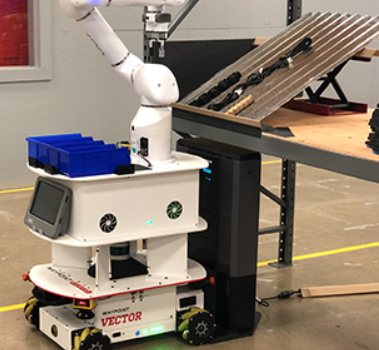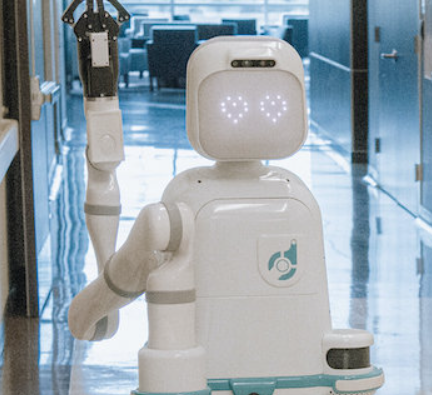
Mobile manipulator robots have expanded the possibilities of automation across various sectors, providing solutions that go beyond the traditional uses of robotic arms. These autonomous robots, which combine mobility with advanced robotic arms, offer flexibility and precision in numerous fields. From cultural heritage conservation to hazardous environments and agriculture, mobile manipulators are setting new trends that are transforming industries.
This blog explores the diverse applications of mobile manipulator robots and the cutting-edge technologies that are enabling their widespread use in sectors that were once beyond the reach of conventional automation.
What is a Robotic Arm?
A robotic arm, also known as a manipulator robot, is a mechanical device designed to replicate the functionality of a human arm. It consists of joints and interconnected components that allow precise movements and positioning. Robotic arms are widely used in manufacturing, aerospace, and logistics for tasks such as assembly, welding, and material handling. These robots can be manually controlled, programmed automatically, or enhanced with Artificial Intelligence (AI) for more adaptive functions.
Unlike traditional robotic arms that are fixed in place, mobile manipulator robots are mounted on mobile platforms, allowing them to move freely and perform tasks in dynamic environments. This combination of mobility and precision enables a wide range of new applications.
Uses of Mobile Manipulator Robots
The growing demand for automation has led to the expansion of mobile manipulator robots into various sectors. These robots are being utilized in a variety of ways, some of which are innovative and less widely known. Here are a few key applications:
Mobile Manipulators in Hazardous Environments
One of the most valuable applications of mobile manipulator robots is in hazardous environments where human safety is at risk. These robots can handle dangerous tasks, reducing the need for human intervention and preventing potential disasters.
- Nuclear Plants: In the nuclear industry, mobile manipulators are used to handle radioactive materials, minimizing human exposure to harmful radiation.
- Disaster Rescue: Mobile manipulator robots are deployed in disaster zones to clear debris and assess damage, providing critical information to rescue teams.
- Chemical Handling: Laboratories and factories use mobile robots to manage hazardous chemicals, ensuring safety and reducing risks to human operators.
Mobile Manipulators in Agriculture
The agricultural industry is another sector where mobile manipulators are making a significant impact. These robots help address labor shortages and improve the efficiency of agricultural processes.
- Crop Monitoring: Mobile manipulators are equipped with vision tools to identify and classify crops, even harvesting them at the right stage of ripeness.
- Automated Pruning: These robots can remove unwanted branches from vineyards and fruit trees, promoting healthier growth and increasing yields.
- Fertilization: Mobile manipulators can automate the application of fertilizers, reducing the risk of exposure to harmful chemicals and improving the overall efficiency of farming operations.
Mobile Manipulators in Cultural Heritage Conservation
An innovative and lesser-known application of mobile manipulator robots is in the conservation of cultural heritage. These robots are used to preserve and restore valuable artifacts and monuments, often in sensitive or difficult-to-reach areas.
- Cleaning and Restoration: Mobile manipulators with specialized tools can clean sculptures and frescoes without damaging delicate surfaces, and assist in reconstructing damaged parts of ancient artifacts.
- 3D Scanning and Digitization: These robots can create detailed 3D models of artworks for virtual restoration or for printing replicas in case of deterioration.
Technological Advances in Mobile Manipulator Robots
The rise of mobile manipulator robots is influenced by several factors:
- Demographic Factors: A shortage of workers, particularly in industries like agriculture, has made automation a necessity. Robotic manipulators fill these gaps by performing tasks for which there is no available labor.
- Social Factors: Increased awareness of robotics has led to broader social acceptance, further driving demand for autonomous mobile robots.
- Technological Factors: Advances in robotics, such as improved sensors, AI, and navigation technologies, enable these robots to execute more complex tasks with greater autonomy.
- Economic Factors: As the global market for robots expands, their costs are decreasing, making it more feasible for companies to invest in robotic solutions.
End-of-Arm Tools (EOAT) Enhance Robotic Capabilities
End-of-arm tools (EOAT), or end effectors, are specialized accessories that attach to the robotic arm, expanding its functionality. These tools range from grippers and suction cups to more complex instruments like welding torches or electric screwdrivers. EOATs allow mobile manipulator robots to perform a variety of tasks, making them even more adaptable to different applications.
By integrating EOATs, mobile manipulator robots can be customized to suit specific needs, providing more flexibility and versatility in addressing automation challenges.
Conclusion
Mobile manipulator robots are revolutionizing industries by offering flexible, efficient, and safe automation solutions. From hazardous material handling to agricultural tasks and cultural heritage preservation, these robots are pushing the boundaries of what automation can achieve. As technology continues to evolve, mobile manipulator robots will undoubtedly play an even larger role in shaping the future of industries worldwide, driving productivity, and improving safety.












